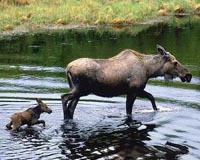 |
Cirona, Spain (SPX) Dec 06, 2010 Agricultural - or Neolithic - economics replaced the Mesolithic social model of hunter-gathering in the Near East about 10,000 years ago. One of the most important socioeconomic changes in human history, this socioeconomic shift, known as the Neolithic transition, spread gradually across Europe until it slowed down when more northern latitudes were reached. Research published, Friday, 3 December 2010, in New Journal of Physics (co-owned by the Institute of Physics and the German Physical Society), details a physical model, which can potentially explain how the spreading of Neolithic farmers was slowed down by the population density of hunter-gatherers. The researchers from Girona, in Catalonia, Spain, use a reaction-diffusion model, which explains the relation between population growth and available space, taking into account the directional space dependency of the established Mesolithic population density. The findings confirm archeological data, which shows that the slowdown in the spreading of farming communities was not, as often assumed, the result of crops needing to adapt to chillier climates, but indeed a consequence of the struggle for space with prevalent hunter-gatherer communities. In the future, the researchers' model could be used for further physical modeling of socioeconomic transitions in the history of humanity. As the researchers write, "The model presented in this work could be applied to many examples of invasion fronts in which the indigenous population and the invasive one compete for space in a single biological niche, both in natural habitats and in microbiological assays." The researchers' paper can be downloaded for free from Friday 3 December 2010 here
Share This Article With Planet Earth
Related Links Institute of Physics Farming Today - Suppliers and Technology
 Hunting moose, a Swedish passion
Hunting moose, a Swedish passionKussjoen, Sweden (AFP) Dec 5, 2010 With a thick carpet of snow softening his footsteps, Stefan Nordstroem creeps slowly between the tall pine and birch trees, his rifle at the ready. He is hunting moose, the towering symbol of Sweden and a prized catch for hunters in the Scandinavian country every autumn. "One bullet is enough, if you aim well," says Nordstroem, a 61-year-old entrepreneur who made his first kill when he ... read more |
|
| The content herein, unless otherwise known to be public domain, are Copyright 1995-2010 - SpaceDaily. AFP and UPI Wire Stories are copyright Agence France-Presse and United Press International. ESA Portal Reports are copyright European Space Agency. All NASA sourced material is public domain. Additional copyrights may apply in whole or part to other bona fide parties. Advertising does not imply endorsement,agreement or approval of any opinions, statements or information provided by SpaceDaily on any Web page published or hosted by SpaceDaily. Privacy Statement |